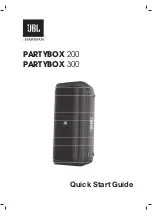
146
This can cause an apparent difference between Transmit and Receive TPL
frequencies even when the same information has been entered into both
fields! This should NOT cause concern, as the displayed frequency is
the nearest encodable frequency to the one entered, and will be
accurate within 0.5%. This difference will only occur on non-standard
PL codes. DPL codes other than those contained in the standard table
cannot be entered directly.
Note:
A low-level hum or buzz in the received audio MAY be
experienced when the TPL code OZ (254.1 Hz) is used. This PL
code is at the high end of the sub-audible frequency range and
may be heard in the audio under certain circumstances. Use of
this code should be avoided if possible.
The default is Disabled (Default Receive Squelch is CSQ).
Transmit PL
Use the UP/DOWN arrow keys to enable/disable this feature. When
this feature is enabled, this option will turn on either Digital Private-
Line (DPL) or a Tone Private-Line (TPL) for the channel displayed in
the channel entry. Use the UP/DOWN arrow keys to scroll through the
choices or enter the frequency directly. Different decode and encode
codes are allowed on the same channel.
When this option is enabled for STAR signalling, the PL signal will be
transmitted during the transmission of RAT, Emergency, or auto-
acknowledgment on a PL channel. When enabled for MDC Signalling,
the PL will be encoded on the PL-enabled channel during MDC
transmission. Encoding of PL during the transmission of PTT ID is not
controlled by this field but is always enabled on a PL-encoded channel.
When this feature is disabled, the PL signal will not be transmitted
during STAR or MDC transmissions, except for the PTT ID
transmission. A valid PL must be selected on the channel for this option to
be applicable.
The default is Disabled.
PL Code (Transmit)
Use the UP/DOWN arrow keys to make your selection or enter the
desired code directly. The transmit PL code can be either a DPL code or
a TPL code taken from the DPL/TPL tables in the Appendix. The TPL
frequency may also be entered directly so that TPL codes not in the
standard table are supported. When a frequency is entered directly, it
will be encoded, and then immediately decoded and re-displayed.
In many cases, the frequency you entered may change by several tenths of a
Hz when you exit this screen and return to it. However, due to differences
in the algorithms for encoding and decoding TPL, the Receive TPL
frequencies will change less often on re-display than the Transmit TPL
frequencies.
This can cause an apparent difference between Transmit and Receive TPL
frequencies even when the same information has been entered into both
fields! This should NOT cause concern, as the displayed frequency is
the nearest encodable frequency to the one entered, and will be
accurate within 0.5%. This difference in frequency will occur only on
non-standard PLs. DPL codes not in the standard table CANNOT be
entered directly.
Summary of Contents for HT 1000
Page 4: ...Notes ...
Page 72: ...66 Notes ...
Page 162: ...156 Notes ...
Page 172: ...166 Notes ...
Page 174: ...168 Notes ...
Page 176: ...170 Notes ...
Page 178: ...172 Notes ...
Page 190: ...184 Notes ...
Page 202: ...196 Notes ...
Page 205: ... 6881073C55 68P81073C55 F Motorola Inc 8000 West Sunrise Boulevard Fort Lauderdale FL 33322 ...
















































